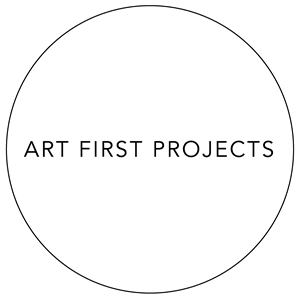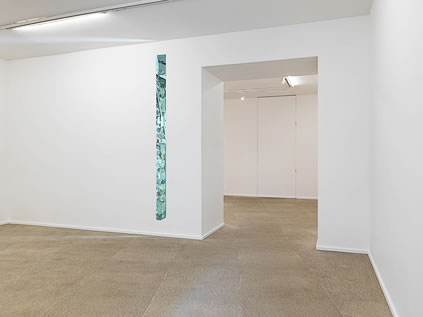Art First Projects
Joe Watling
Vanishing Point
5 May - 18 June, 2011
The system is the work of art; the visual work of art is the proof of the System. The visual aspect can't be understood without understanding the system. It isn't what it looks like but what it is that is of basic importance.
Sol LeWitt
In conversation with Saul Ostow, Bomb Magazine, 2003
In his first solo show with the gallery Joe Watling looks to the space itself to provide the variables for realizing his work. LeWitt’s self referential examination of ‘what it is’ applies here, but a more apposite question might be ‘what has happened?’ – i.e. what has changed and what has not, which elements constitute artistic intervention and which remain in their original context.
Watling’s manipulation of space and material manages to be both monumental and subtle. Entire landscapes and interiors are radically changed, but rarely do any elements of the alterations or additions to the space announce themselves as ‘art objects’ in themselves – a newly created wall may drop at a disconcerting angle or appear in a jarring position, but it is still a wall, synonymous with the others surrounding or abutting it. Operating in this way Watling refuses to allow passive readings of his work – a viewer cannot simply stand and look in one direction at an object or element of the work and through the act of looking understand what has occurred as a whole. The ‘form’ of the work (which often extends beyond the physical space, having only a notional ‘end’ where the space itself acts as a bounding box to what is visible of the conceptual form) must be pieced together from what evidence is made available. Here the observer is treated less as a ‘viewer’, but more as an audience – a person or persons complicit and actively participatory in the ‘building’ or rather imagining of the wider form and of the processes that would arrive at its creation.
In previous exhibitions of his work Watling has alluded to the theatrical or ‘unreal’ feel of his practice. This desire to construct what can be seen as sculptural conceits perhaps stems from the artists’ interest in using art galleries – themselves already ‘stages’ – as source material. The architecture of the modern gallery is invariably the architecture of the background; the unseen and out-of-focus framework upon which the ‘object’ is mounted. In his treatment of gallery spaces Watling extracts that framework and leaves it suspended in plain view, remoulding it to become a thing in itself – suddenly the ‘what it is’ applies to the background, and not the object, as the subject of the system.
Though this processes of extraction and reordering is labour intensive and achieved on a large scale, very little of the artist himself remains for the observer to uncover. In Watling’s clean and perfectly finished work we find possibilities of new forms, new and conflicting boundaries that guide new ways of perceiving the space and environment we are immersed in, but the artist is nowhere to be seen – he and the background have switched places. Carefully omitting all trace of his implication as creator of the new physical order, Watling recedes from view, leaving us only with the beauty and strangeness of an altered space and the question – ‘what has happened’?






